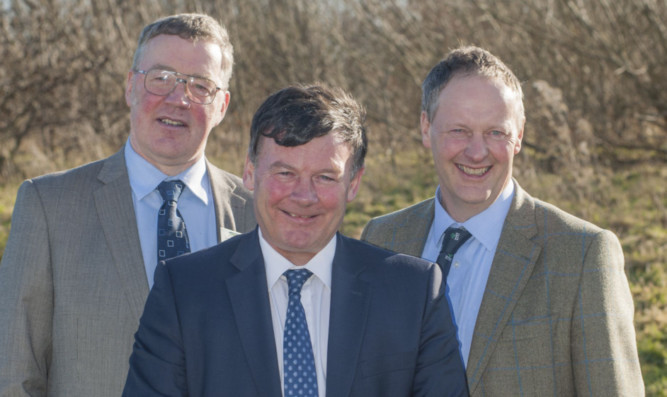NFU Scotland has a new presidential team led by Fife farmer Allan Bowie, but his election only came at the end of what outgoing president Nigel Miller described as “a ghastly process”.
He was referring to the scrupulous and rigorously fair voting procedure which, in a very public way, knocks out all contenders until the final winner emerges.
The process was undoubtedly made more gruelling at the annual meeting in St Andrews because of the number of contenders there were six in the field altogether.
Mr Bowie, who has already served a five-year apprenticeship as vice-president, was only in contention for the presidential position.
Borders farmer Rob Livesey, also a vice-president, was standing for either president or vice-president, as was combinable crops committee chairman and Laurencekirk farmer Andrew Moir.
East Lothian farmer and former livestock committee chairman Kelvin Pate, Dumfries and Galloway regional chairman Andrew McCornick, and Mull of Kintyre dairy farmer John Smith were all standing for one of the two vice-presidential posts. Thus was the stage set for a 9am showdown.
However, the agony was to be prolonged due to some of the 124 NFUS Council members registered to vote being delayed in traffic.
The first vote for president would only have been conclusive if one of the candidates had achieved more than 50% of the votes cast.
This did not happen, leaving Rob Livesey as the first to have to put a brave face on what must have been a bitter disappointment.
The next vote between Allan Bowie and Andrew Moir only needed a simple majority and, once the papers were counted, Mr Bowie emerged victorious.
There is no doubt this would be a blow to Mr Moir, who had campaigned hard in the run-up to the election, but he still had a chance to become a vice-president.
Again it was a long knock-out process as the ballot papers were carefully counted.
Kelvin Pate was first man out, followed in the next round by John Smith.
This left three candidates for vice-president.
After what must have seemed like an eternity, the successful candidates were announced as Andrew McCornick and Rob Livesey.
This left Andrew Moir in the odd position of having been placed ahead of Rob Livesey in the presidential race but being defeated by him in the vice-presidential vote.
Cue much scratching of heads, but the most prevalent theory was that the electorate, which is confined only to the council members in the room, had seen an arable farmer voted in as president and judged that the two vice-presidents should be livestock farmers. This would better reflect the balance of enterprises in Scottish farming.
There may be other theories, of course.
The end result of the near hour-and-a-half process was a much relieved new leadership triumvirate posing happily for photographs, with the other three individually putting a brave face on it and surviving to fight another day.
All was done in good grace, however. All six are close colleagues, made closer by travelling around the country together during several weeks of hustings.
Mr Miller was right, however it is a ghastly process for those involved.
At least, thanks to recent rule changes, it will be two years before it has to be repeated.
